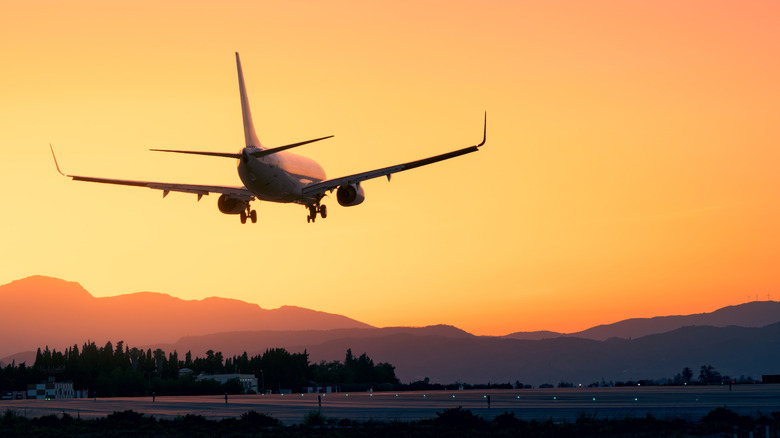Why Armrests Have To Be Down When A Plane Takes Off & Lands
The armrests on an aircraft are an unassuming yet sometimes rather controversial feature. You might want to lounge a little, only to be denied by your neighbor who claimed it first. Another important thing to consider is this: during takeoff and landing, the cabin crew are typically super insistent that armrests are down throughout the process. It may not be clear exactly why that is.
The Federal Aviation Administration establishes a series of recommendations for aircraft carriers and operators. Pertinent to armrest protocol is Air Carrier Operations Bulletin No. 1-94-9. It notes the need to "emphasize to flight attendants that prior to takeoff and landing they verify that the armrests are in the normal forward/down position in order to ensure that they do not obstruct the passageway between the row or seats leading from the aisle to the emergency exit." This is because the armrests, when stowed/upright, cna protrude beyond the seat back, potentially blocking aisles.
When flying, safety is absolutely paramount. It's the responsibility of a wide range of airport staff before passengers even board, and of the flight crew during the journey. Passengers have their own responsibility to pay attention during the safety briefing, consult the safety card in front of them if they require a refresher, and put down their seat trays and armrests and fasten their seatbelts during takeoff and landing. In an emergency situation, obstructions and clutter can cost precious time, cause injuries, or even be a deadly danger. All these smaller acts help to mitigate that. The flight crew always knows when something's wrong and can advise accordingly.
The potential dangers of aircraft armrests
If you've ever had to shuffle past a row of disgruntled people in a movie theater to get back to your seat, you can imagine what having to do so with great haste during an emergency situation on an aircraft would be like, such as a mechanical issue during a flight. For this reason, keeping the armrest in an unobtrusive position ensures that everyone has as much room to get out of their seats and into the aisle as possible, should an emergency arise. It also helps to prevent any potential injuries that could be caused by a wayward armrest. An upright armrest, in the case of an emergency landing or other short, sharp movement, can possibly swing forward with considerable force. Keeping them stowed away, just as with your seat's table, helps to prevent this eventuality.
Airports and aircraft carriers and operators must also ensure that their services cater to the various potential accessibility requirements of passengers. Federal regulations note that carriers "are not required to provide movable armrests on aisle seats of rows which a passenger with a mobility impairment is precluded from using by an FAA safety rule." Lifting the armrests, meanwhile, can be critical for allowing passage for those who aren't as mobile. The U.S. Department of Transportation reports that moveable armrests aren't necessary on seats on which they aren't practical to implement "or aisle seats which a passenger with a mobility impairment is precluded from using by an FAA safety rule." As is always the case when flying, then, the vital thing is to be sure you're placed appropriately, and to heed any and all safety advice given.

